Customer Value Proposition Canvas
Overviews
Wants to create and deliver Value for its Customers?
– A value proposition is a promise of value to be delivered and acknowledged and a belief from the customer that value will be appealed and experienced. A customer value proposition is a description of the experiences a target user will realize upon purchase and use of a product.
The Value Proposition Canvas is a tool which can help ensure that a product or service is positioned around what the customer values and needs.
The Value Proposition Canvas was initially developed by Dr Alexander Osterwalder as a framework to ensure that there is a fit between the product and market. It is a detailed look at the relationship between two parts of the Osterwalder’s broader Business Model Canvas; customer segments and value propositions. The Value Proposition Canvas can be used when there is need to refine an existing product or service offering or where a new offering is being developed from scratch.
Let us learn how to create a Value Proposition Canvas
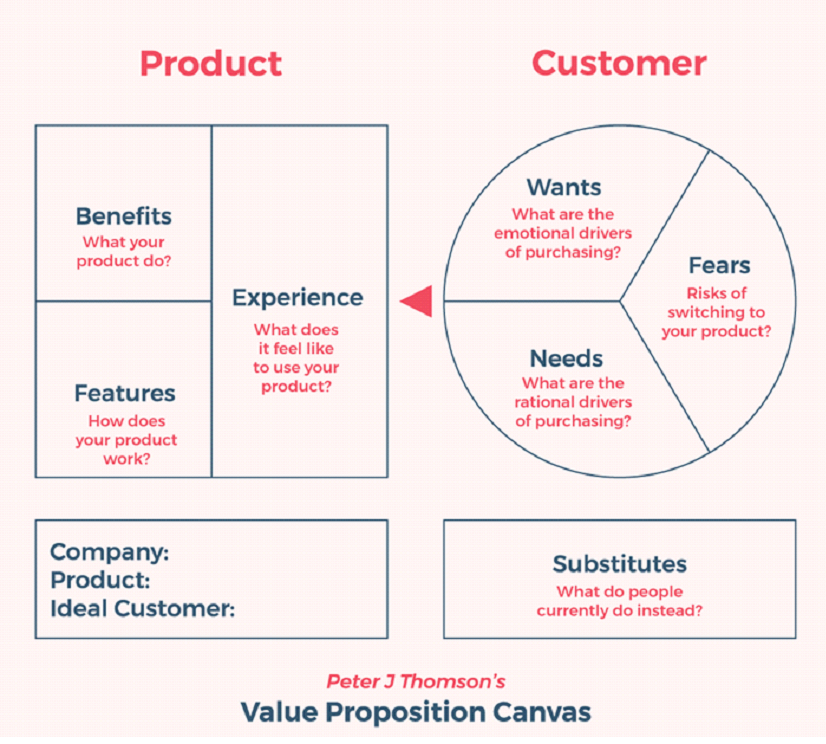
A benefit is what your product does for the customer. The benefits are the ways that the features make your customer’s life easier by increasing pleasure or decreasing pain. The benefits of your product are the core of your value proposition. The best way to list out the benefits of your product is to imagine all the ways that your product makes your customer’s life better.
A feature is a factual description of how your product works. The features are the functioning attributes of your product. The features also provide the ‘reasons to believe’. Many FMCG marketers deride the importance of features because features are no longer a point of difference in most FMCG marketing. But for technology products and innovative new services the features can still be important.
The product experience is the way that owning your product makes the customer feel. It’s the sum total of the combined features and benefits. Product experience is different to features and benefits because it’s more about the emotional reasons why people buy your product. The product experience is the kernel that will help identify the market positioning and brand essence that is usually built out of the value proposition. The emotional drivers of decision making are things that we want to be, do or have. Our wants are usually conscious (but aspirational) thoughts about how we’d like to improve our lives. The customer’s needs are the rational things that the customer needs to get done. Interestingly, needs are not always conscious. Customers can have needs that they may not know about yet. Designers call these “latent needs “.
The dark side of making a decision is that it carries fear. Fear of making a mistake, fear of missing out, fear of loss and dozens of other related fears. Fears can be a strong driver of purchasing behavior and can be the hidden source of wants and needs. Customer fears are often the secret reason that no one is buying your widget. For any product there is a secret “pain of switching “. Even if your product is better than the competition, it might not be a big enough improvement to overcome the inertia of the status quo.
Step 1: Insert Table
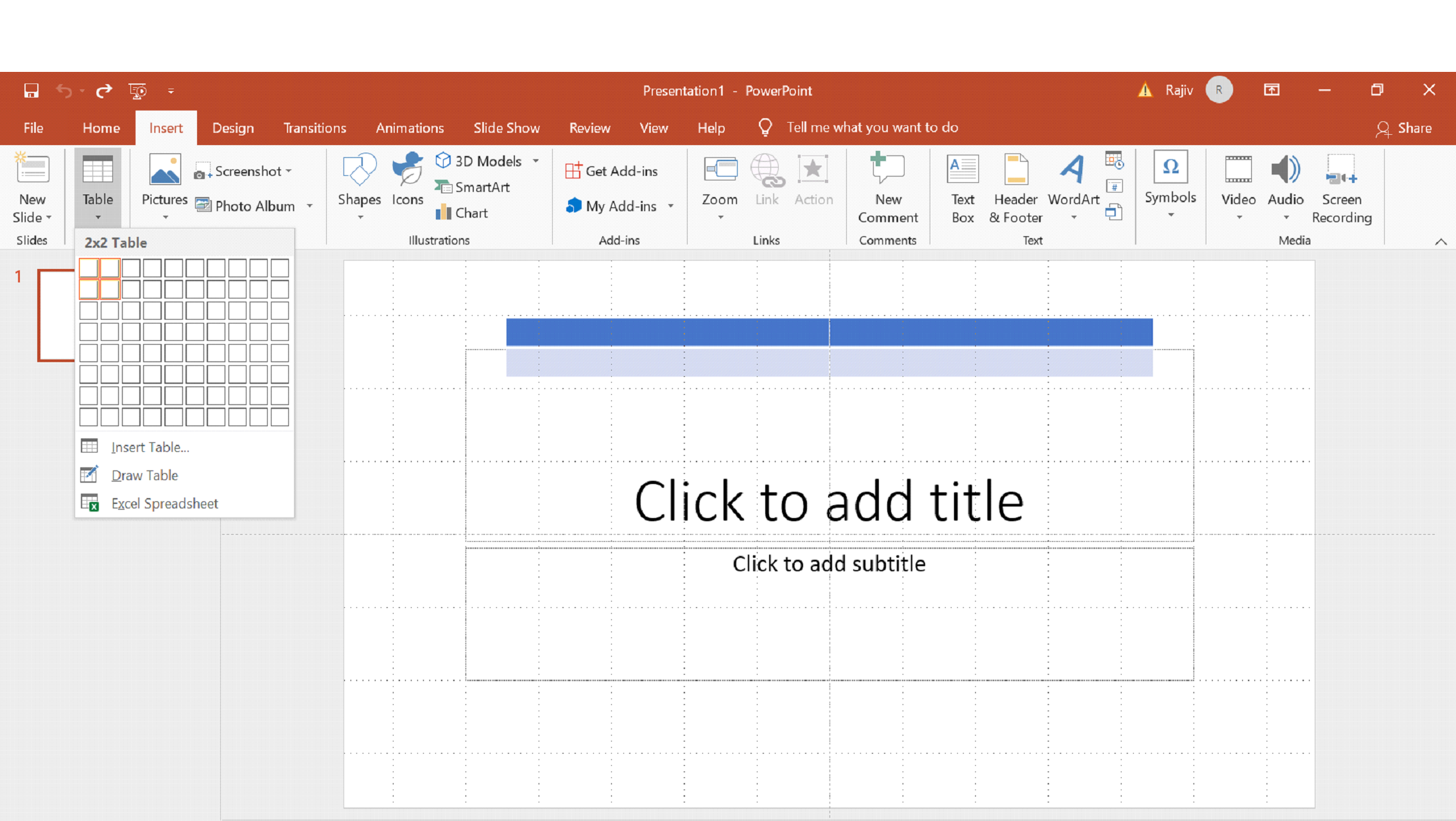
Step 2: Merge the second column and row Cells
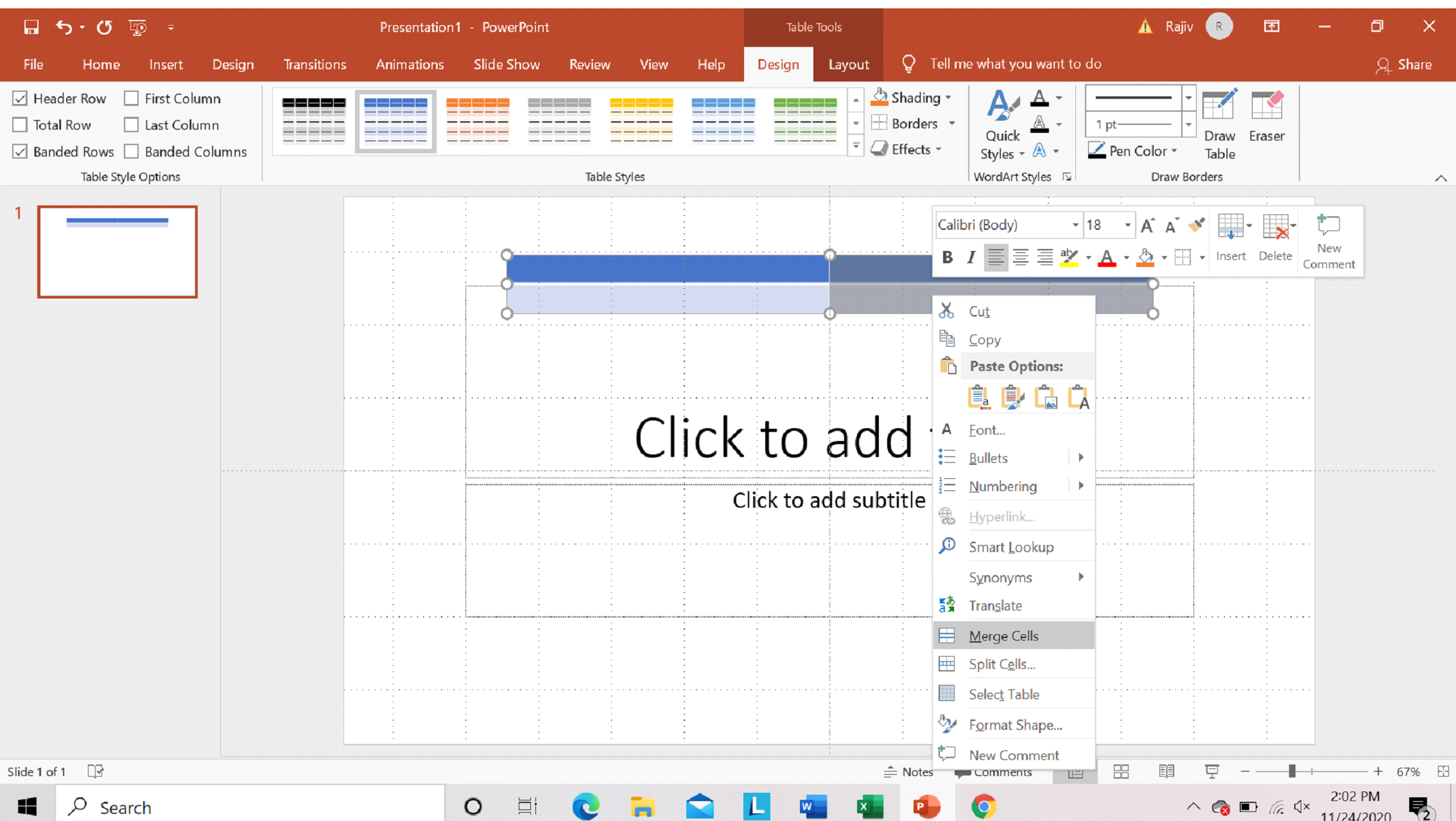
Step 3: Design Tab -> Borders -> All Borders
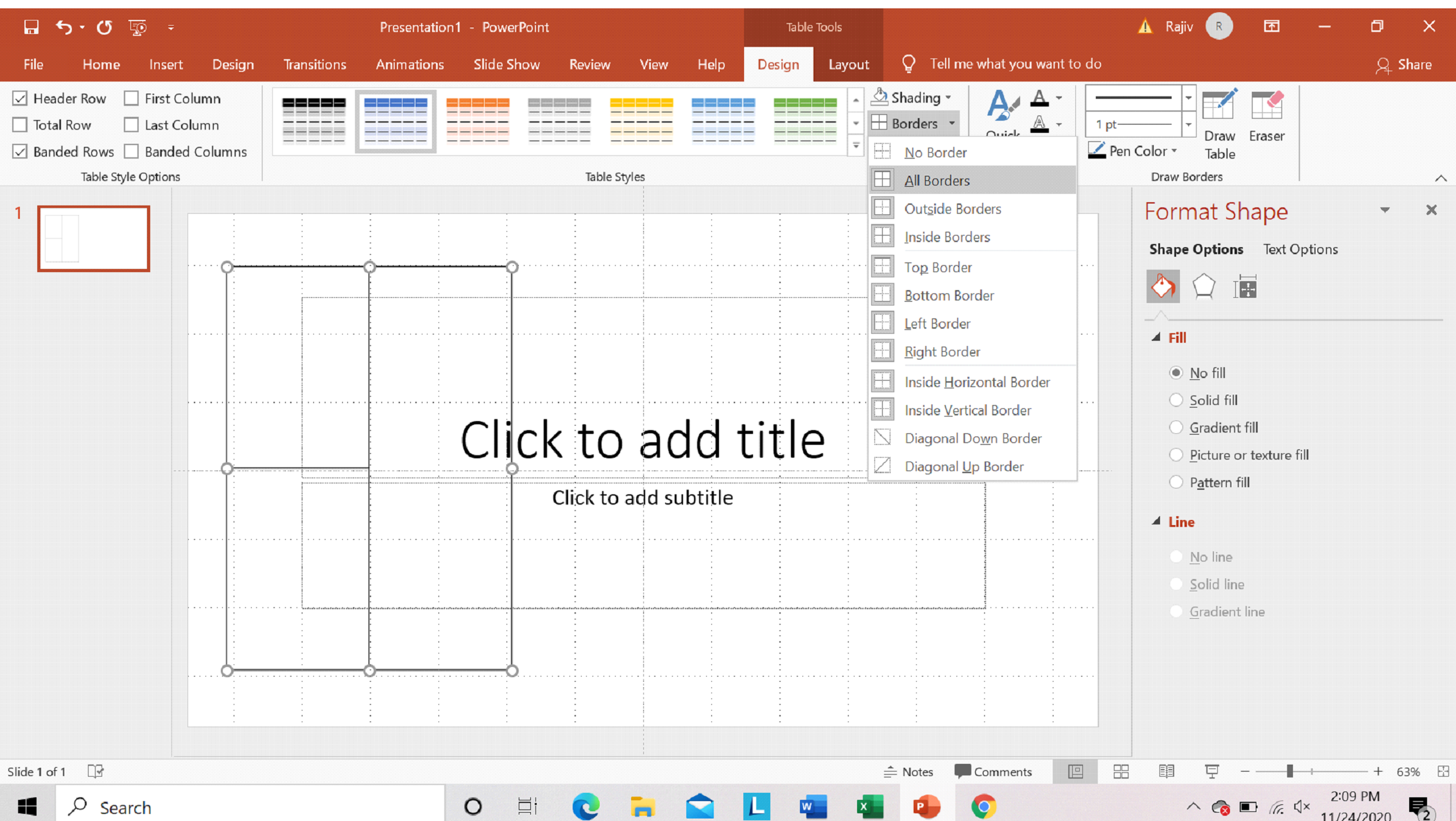
Step 4: Design Tab -> Borders -> All Borders
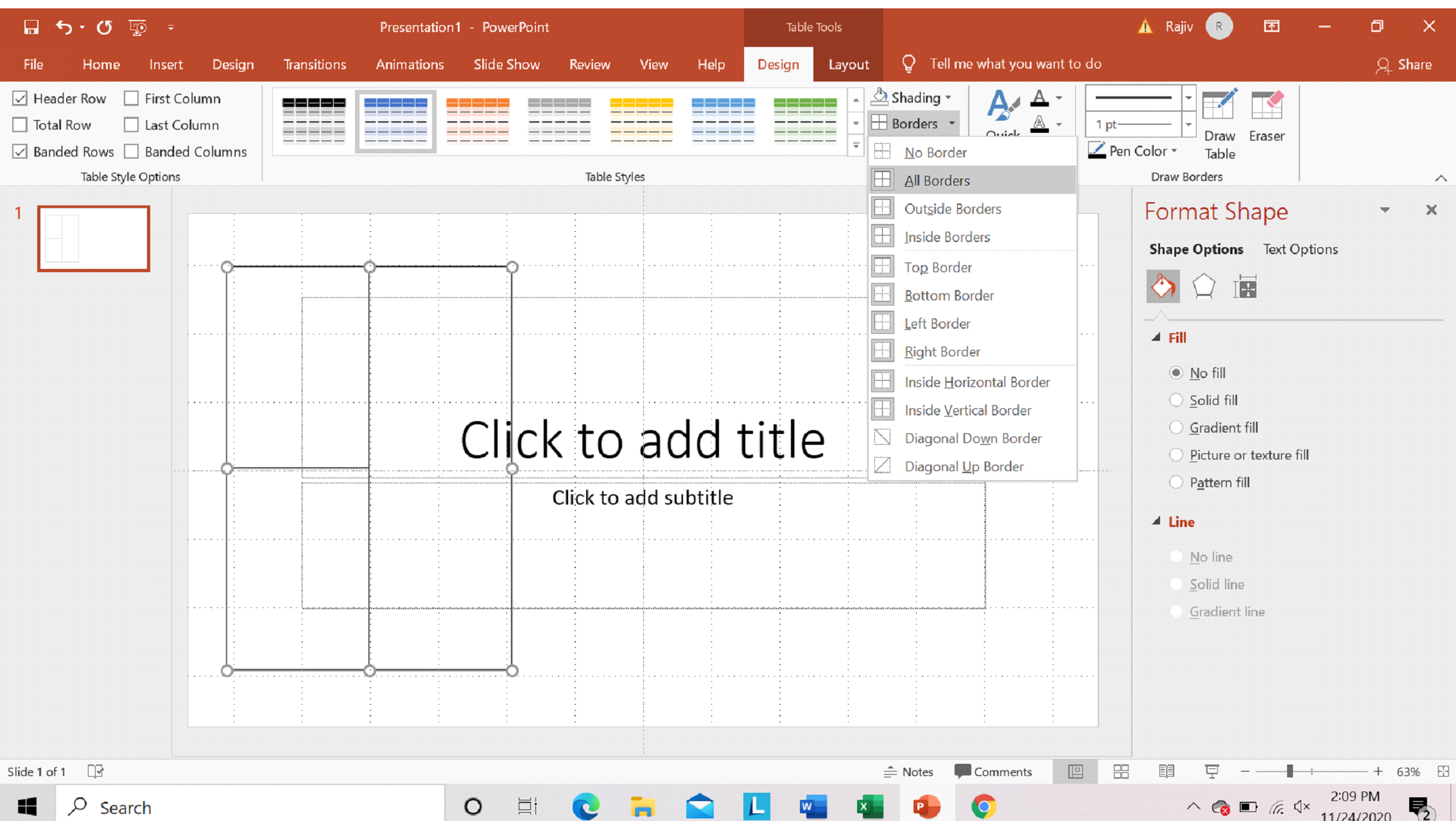
Step 5: Align Text -> Vertical Alignment -> Middle
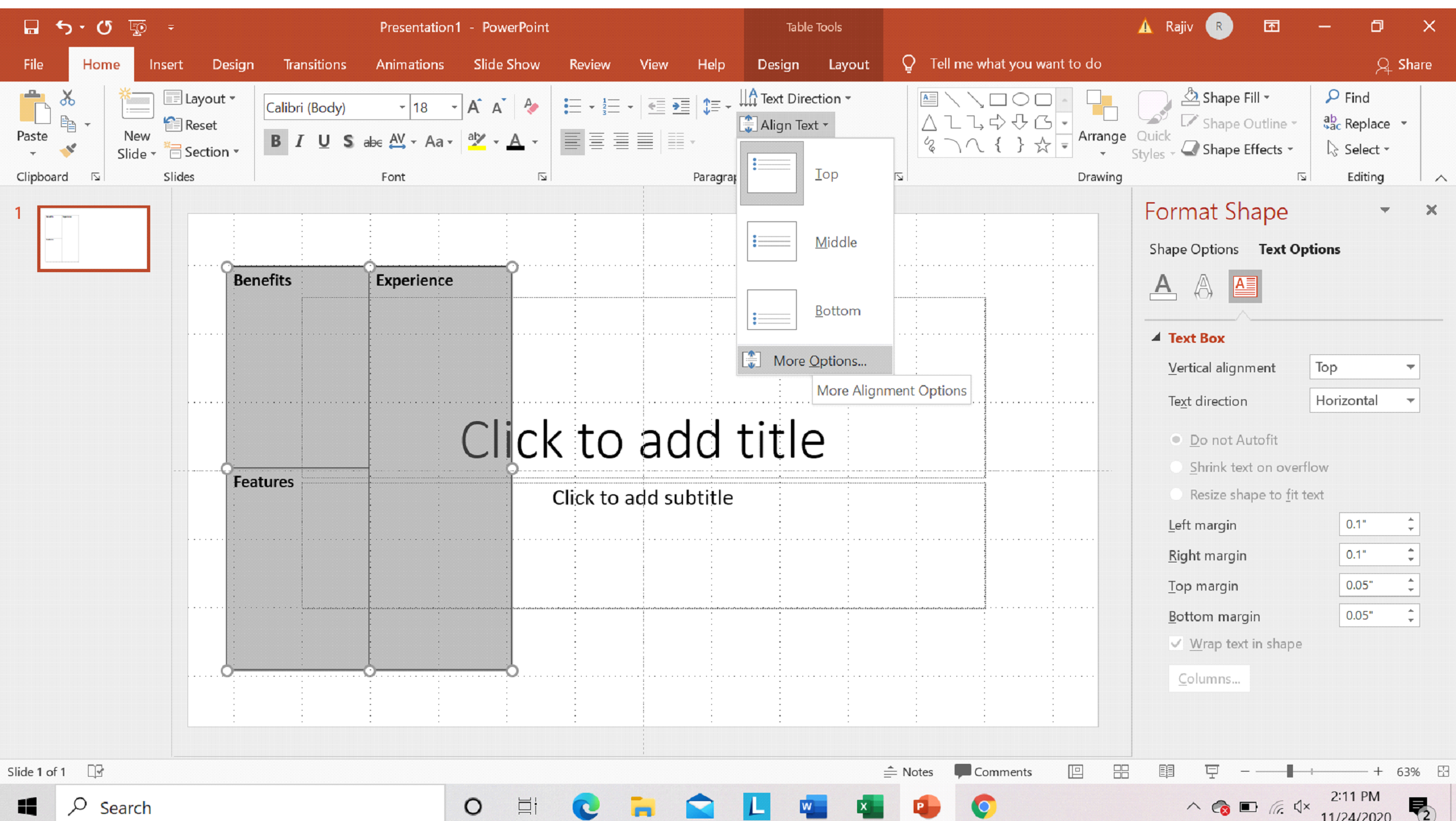
Step 6: Center Justify Text
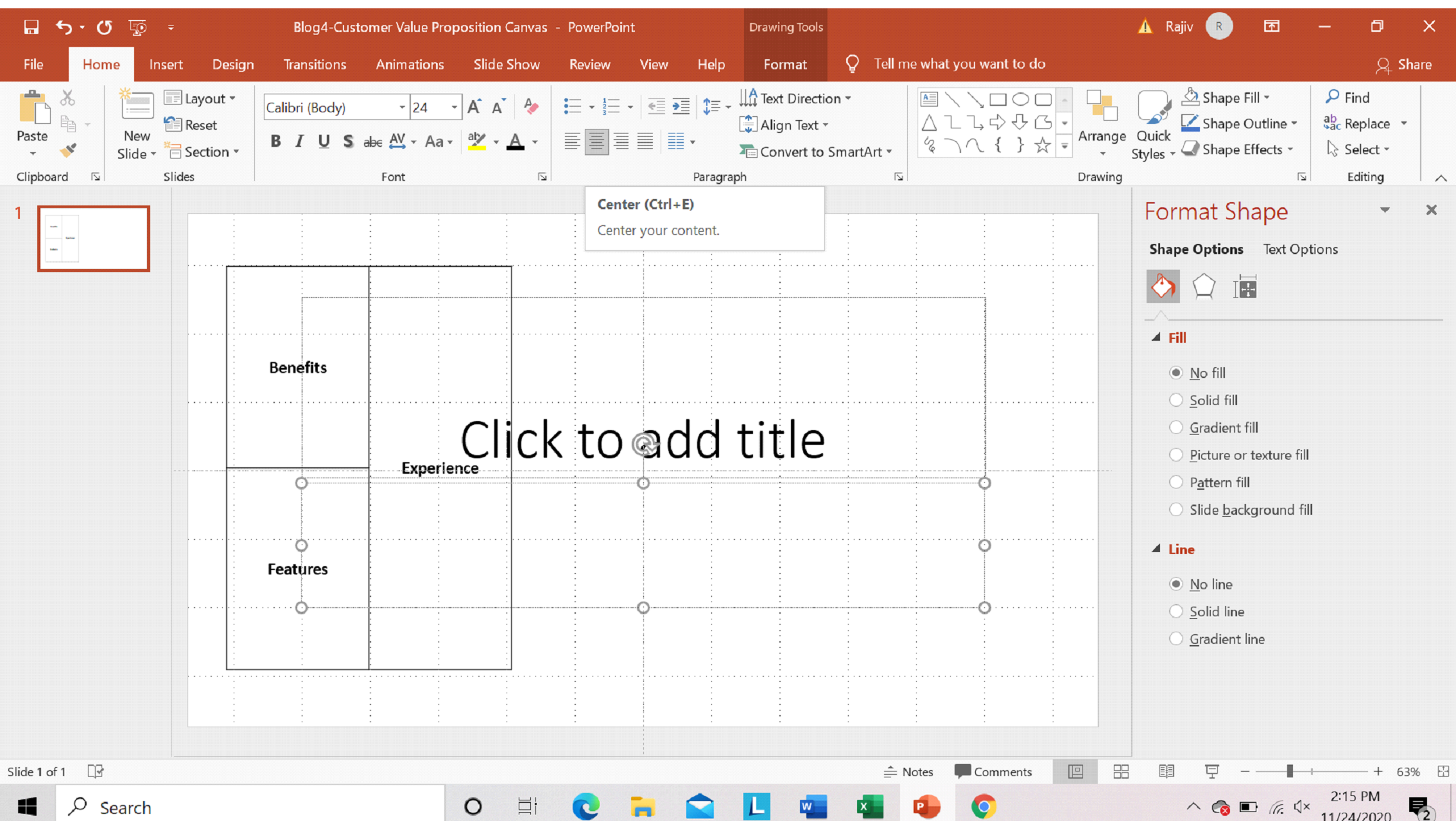
Step 7: Insert -> SmartArt-> Basic Pie
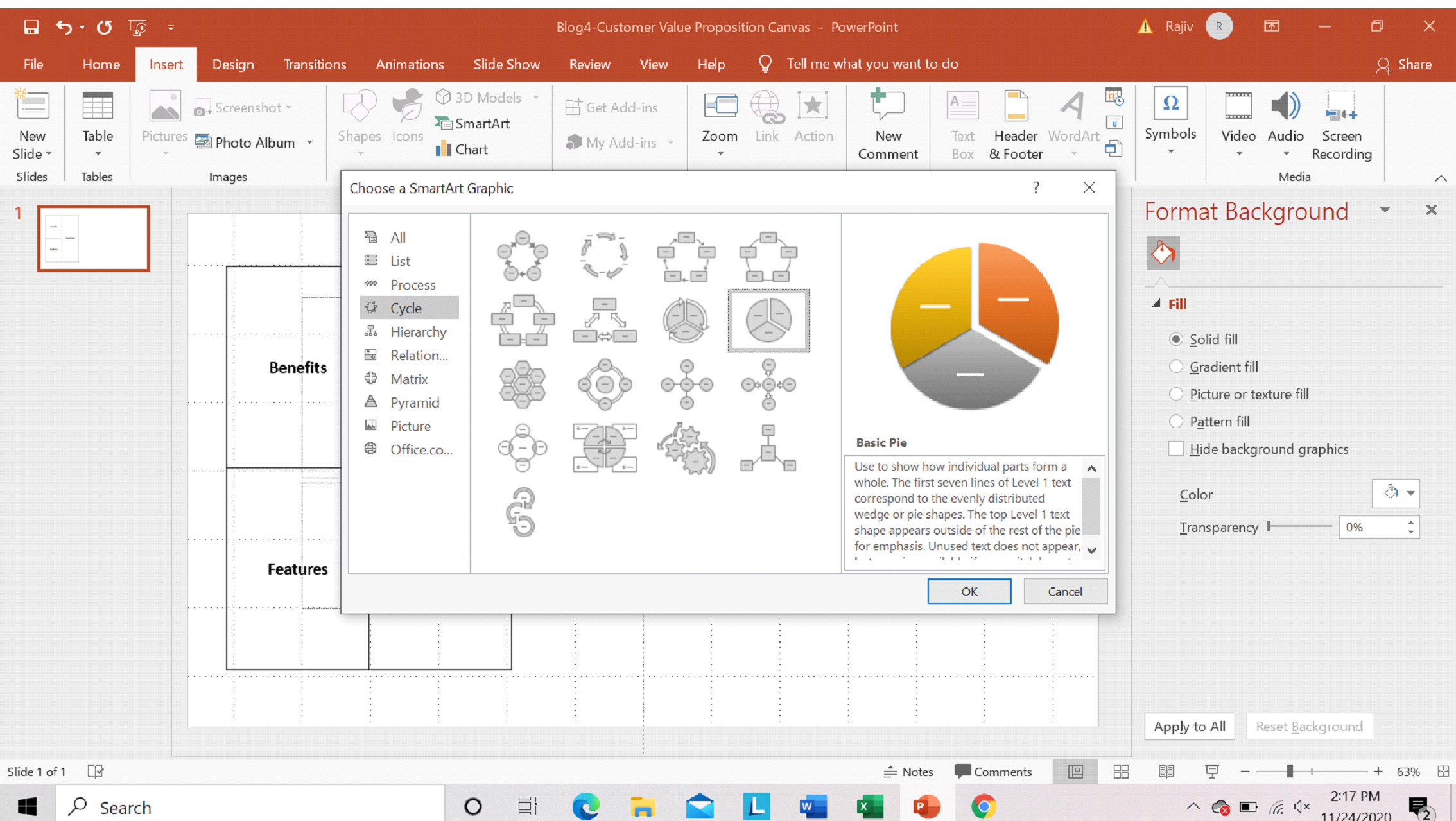
Step 8: Rotate, Resize and No Fill
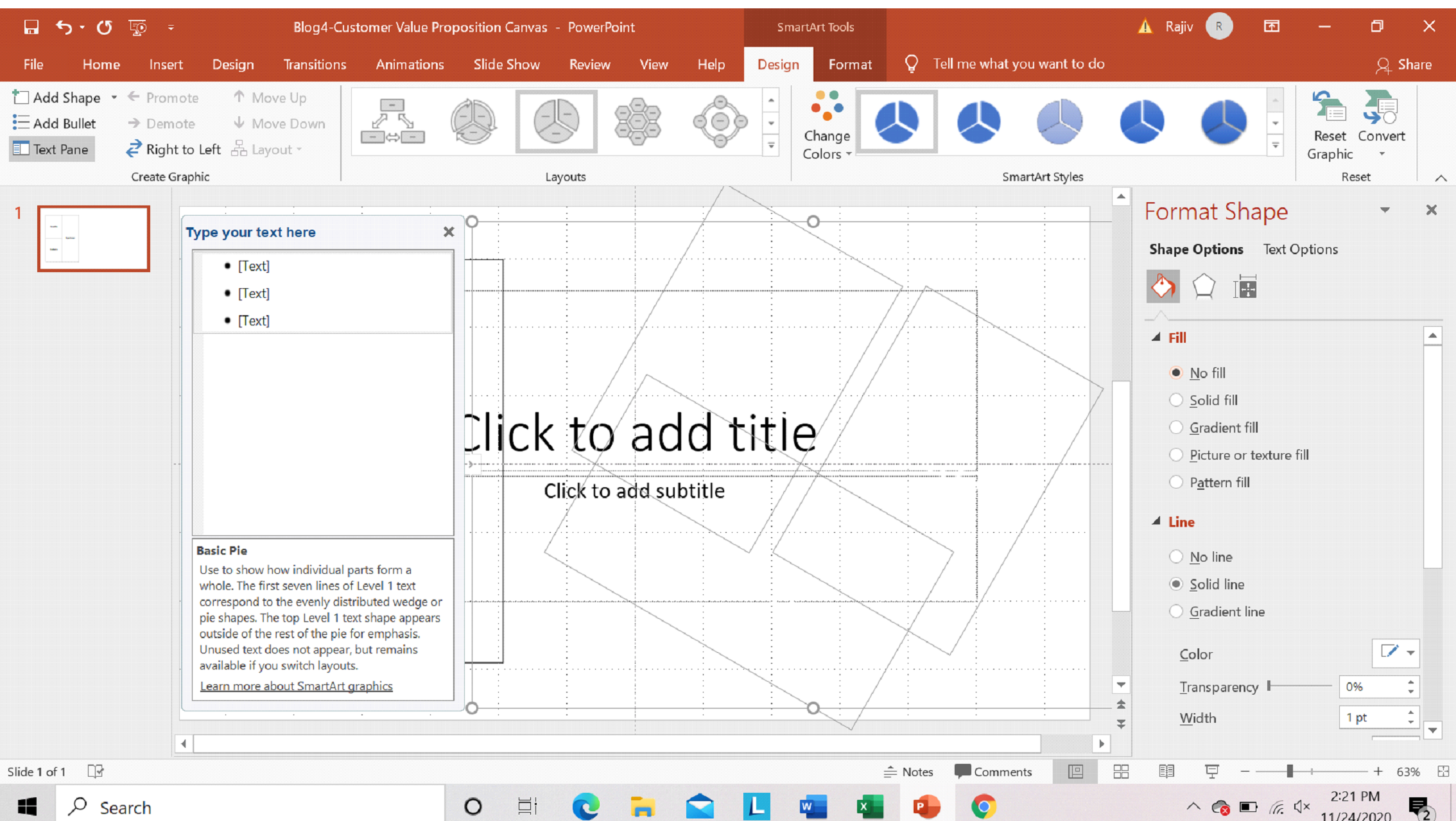
Step 9: Format -> Shape Outline
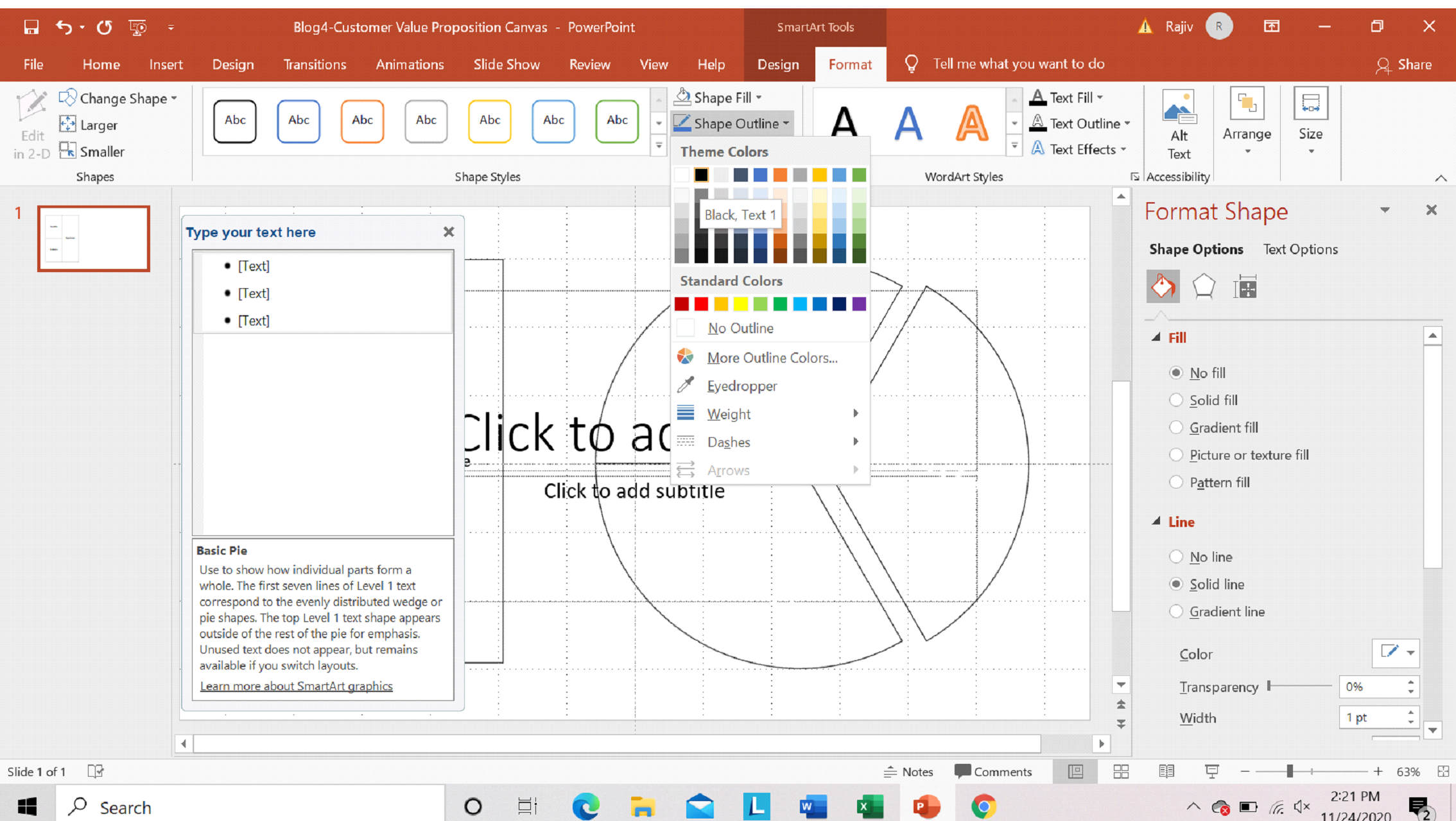
Step 10: Enter Text and push the piece of pie inside to complete the circle
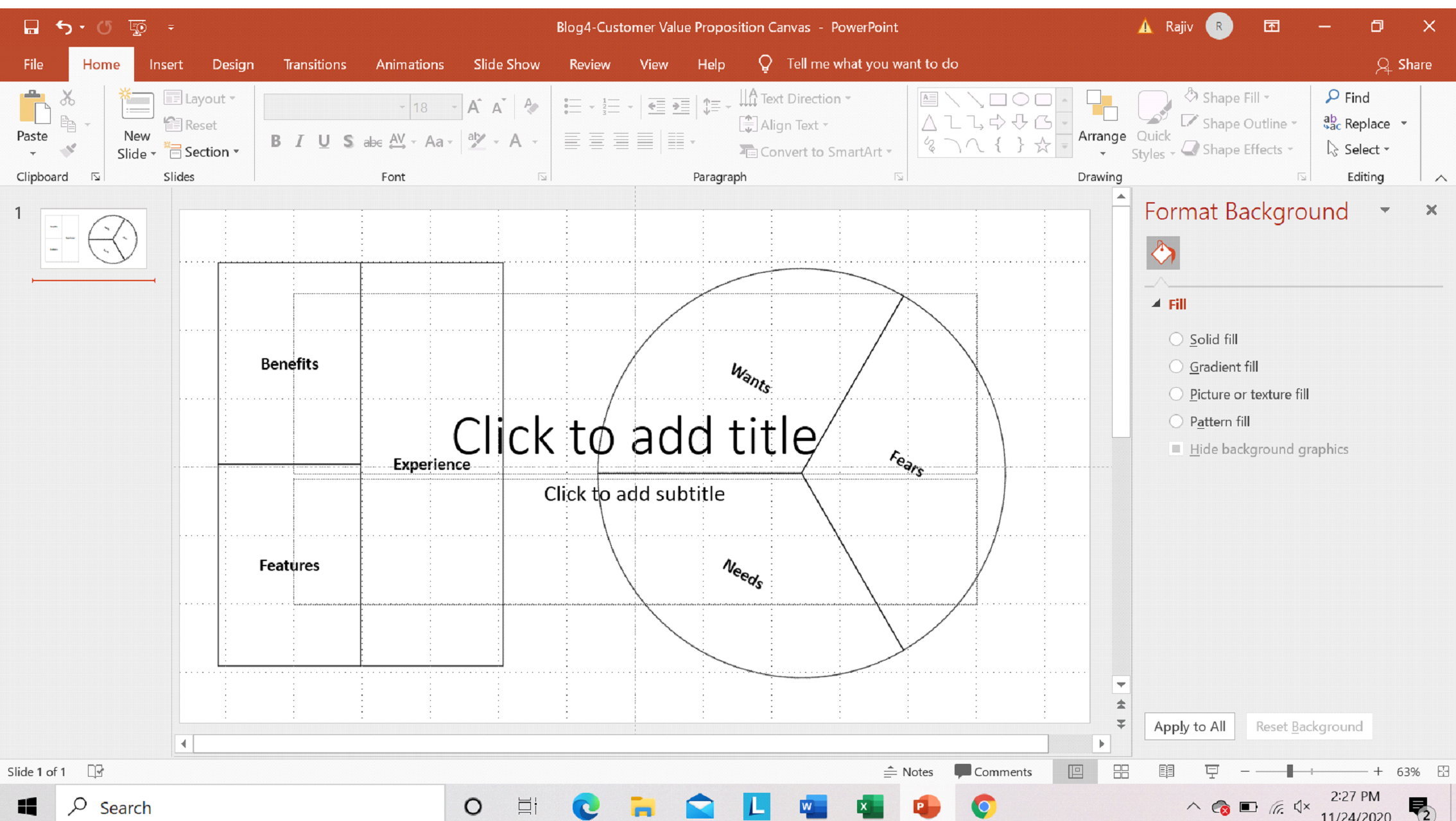
Step 11: Insert other shapes
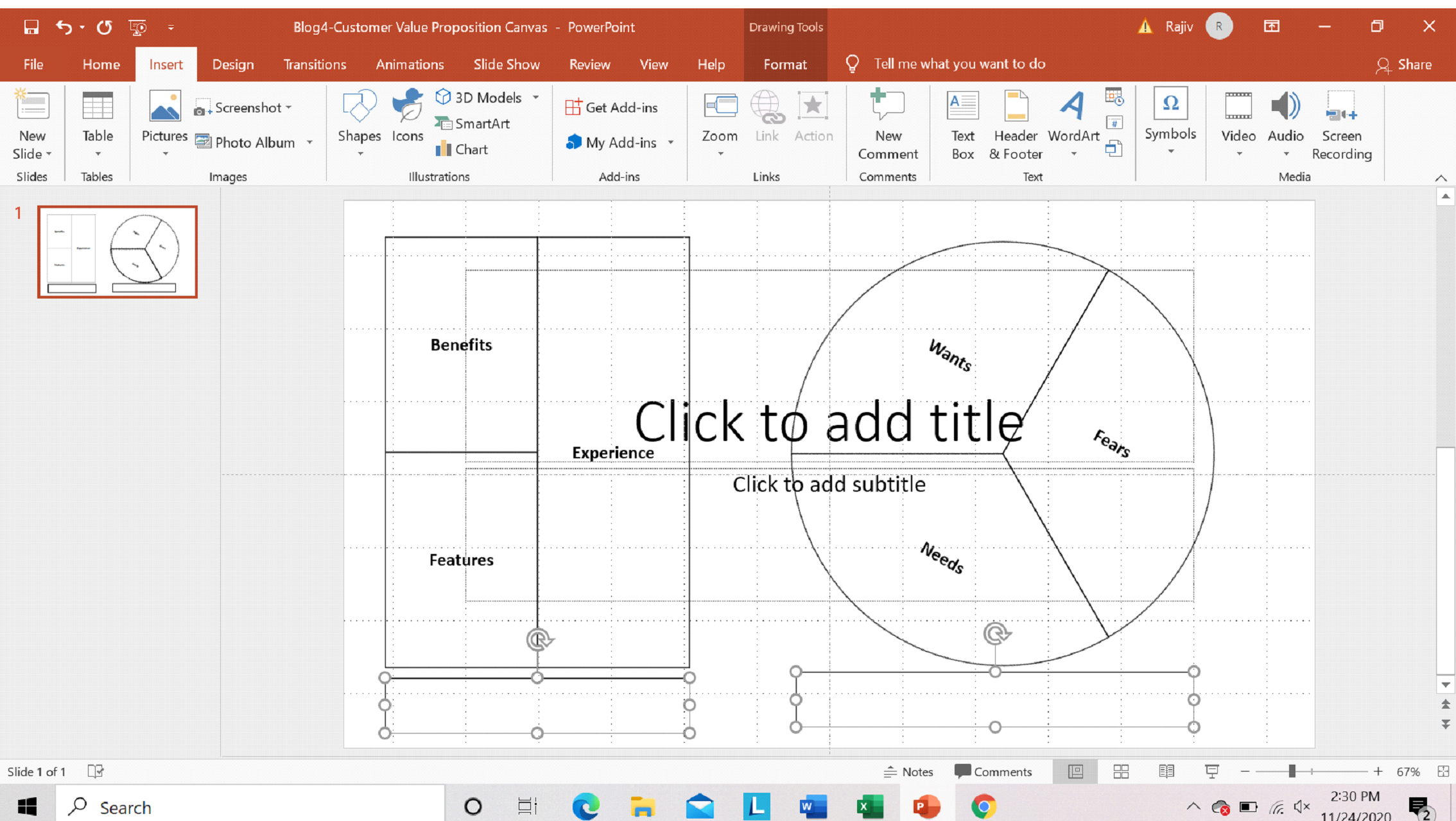
Step 12: Insert other shapes
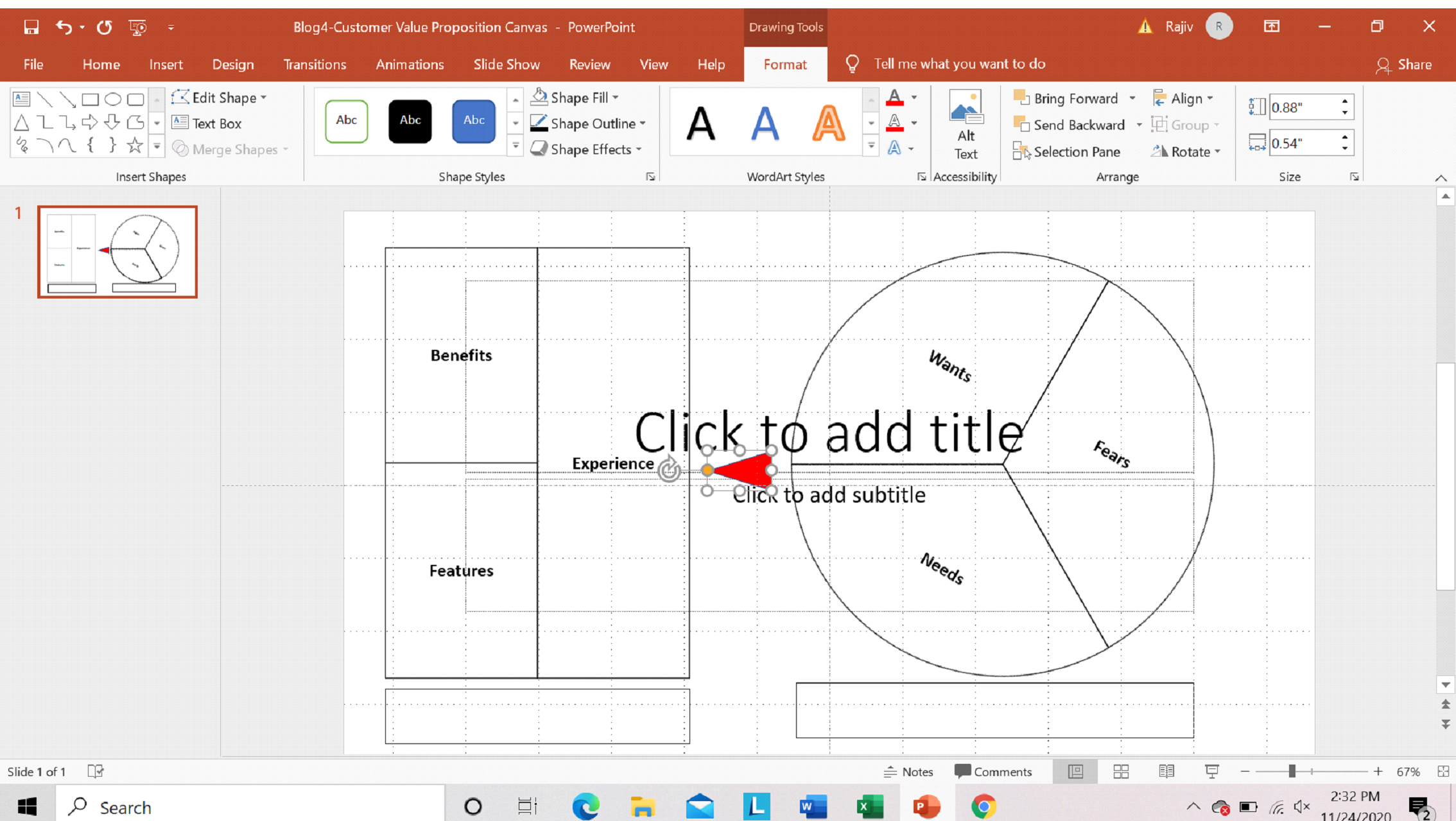
Step 13: Change Slide Background
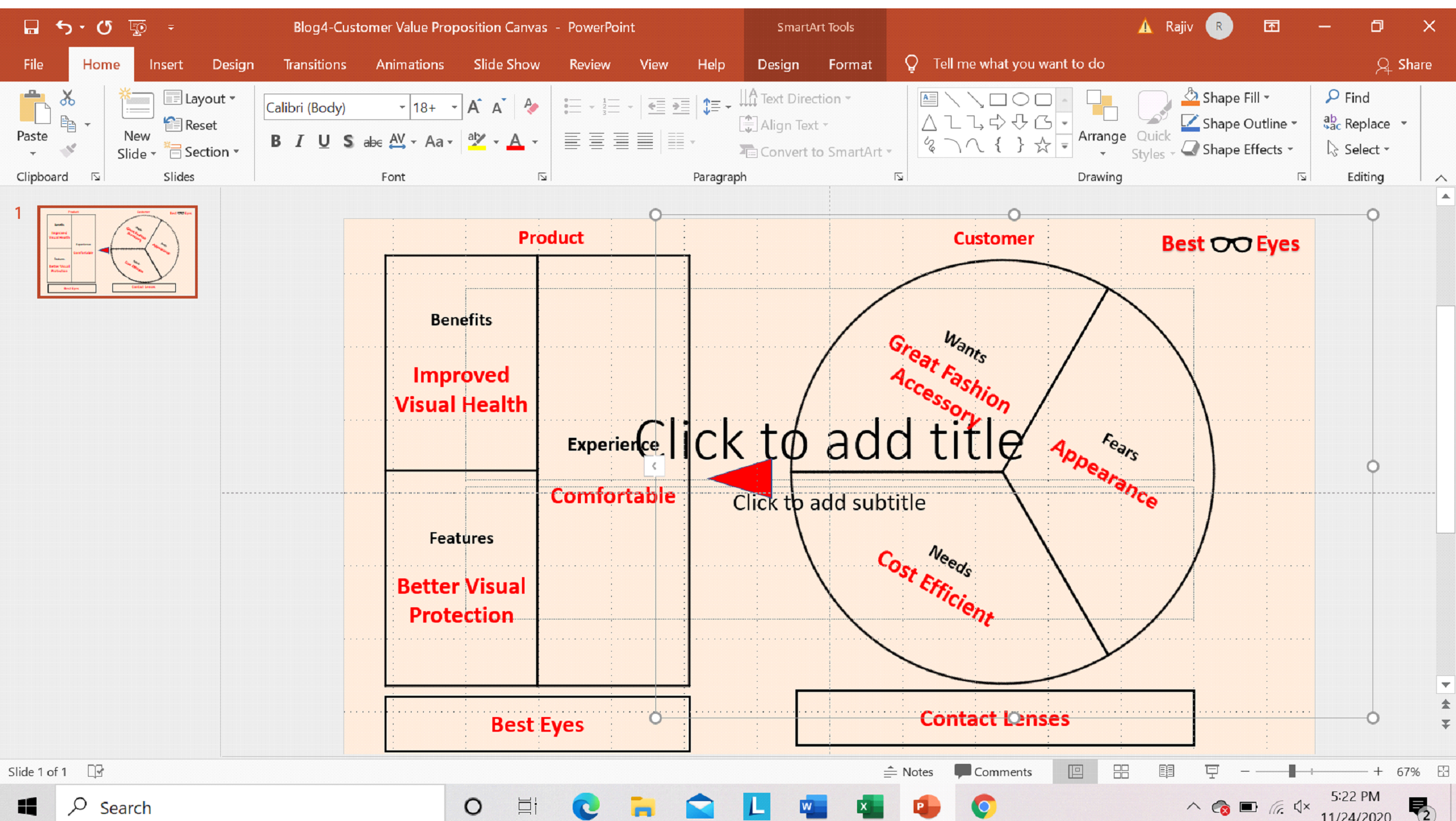
Step 14: Preview Slide
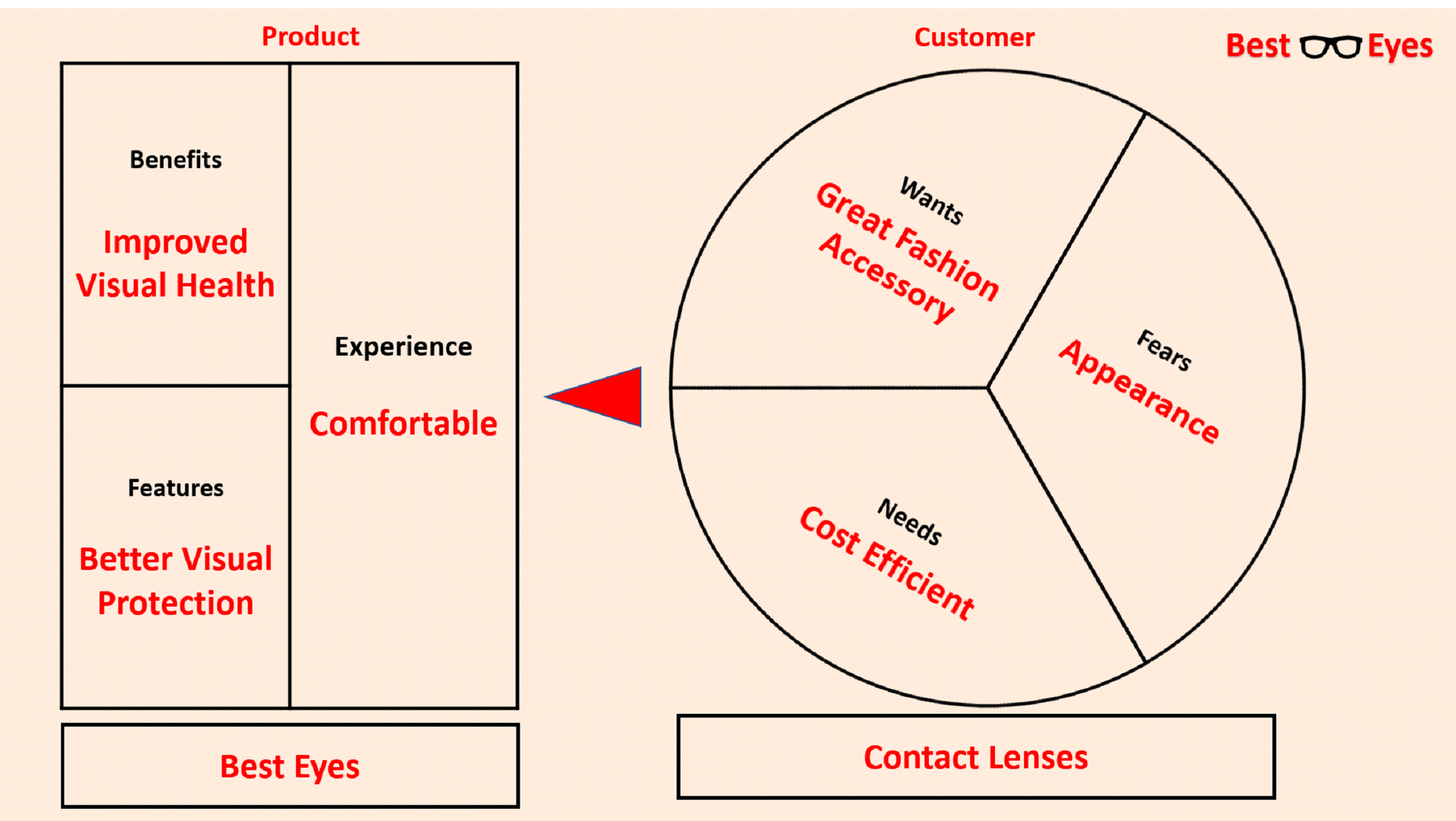
Scope of Usage
Wants to create and deliver Value for its Customers?
– A value proposition is a promise of value to be delivered and acknowledged and a belief from the customer that value will be appealed and experienced. A customer value proposition is a description of the experiences a target user will realize upon purchase and use of a product.
The Value Proposition Canvas is a tool which can help ensure that a product or service is positioned around what the customer values and needs.
The Value Proposition Canvas was initially developed by Dr Alexander Osterwalder as a framework to ensure that there is a fit between the product and market. It is a detailed look at the relationship between two parts of the Osterwalder’s broader Business Model Canvas; customer segments and value propositions. The Value Proposition Canvas can be used when there is need to refine an existing product or service offering or where a new offering is being developed from scratch.
Let us learn how to create a Value Proposition Canvas

A benefit is what your product does for the customer. The benefits are the ways that the features make your customer’s life easier by increasing pleasure or decreasing pain. The benefits of your product are the core of your value proposition. The best way to list out the benefits of your product is to imagine all the ways that your product makes your customer’s life better.
A feature is a factual description of how your product works. The features are the functioning attributes of your product. The features also provide the ‘reasons to believe’. Many FMCG marketers deride the importance of features because features are no longer a point of difference in most FMCG marketing. But for technology products and innovative new services the features can still be important.
The product experience is the way that owning your product makes the customer feel. It’s the sum total of the combined features and benefits. Product experience is different to features and benefits because it’s more about the emotional reasons why people buy your product. The product experience is the kernel that will help identify the market positioning and brand essence that is usually built out of the value proposition. The emotional drivers of decision making are things that we want to be, do or have. Our wants are usually conscious (but aspirational) thoughts about how we’d like to improve our lives. The customer’s needs are the rational things that the customer needs to get done. Interestingly, needs are not always conscious. Customers can have needs that they may not know about yet. Designers call these “latent needs “.
The dark side of making a decision is that it carries fear. Fear of making a mistake, fear of missing out, fear of loss and dozens of other related fears. Fears can be a strong driver of purchasing behavior and can be the hidden source of wants and needs. Customer fears are often the secret reason that no one is buying your widget. For any product there is a secret “pain of switching “. Even if your product is better than the competition, it might not be a big enough improvement to overcome the inertia of the status quo.
Step 1: Insert Table

Step 2: Merge the second column and row Cells

Step 3: Design Tab -> Borders -> All Borders

Step 4: Design Tab -> Borders -> All Borders

Step 5: Align Text -> Vertical Alignment -> Middle

Step 6: Center Justify Text

Step 7: Insert -> SmartArt-> Basic Pie

Step 8: Rotate, Resize and No Fill

Step 9: Format -> Shape Outline

Step 10: Enter Text and push the piece of pie inside to complete the circle

Step 11: Insert other shapes

Step 12: Insert other shapes

Step 13: Change Slide Background

Step 14: Preview Slide

Scope of Usage
- Can be used for an overall marketing strategy
- Can be used to introduce a brand to customers
- Can be used to summarize the expectation of value

